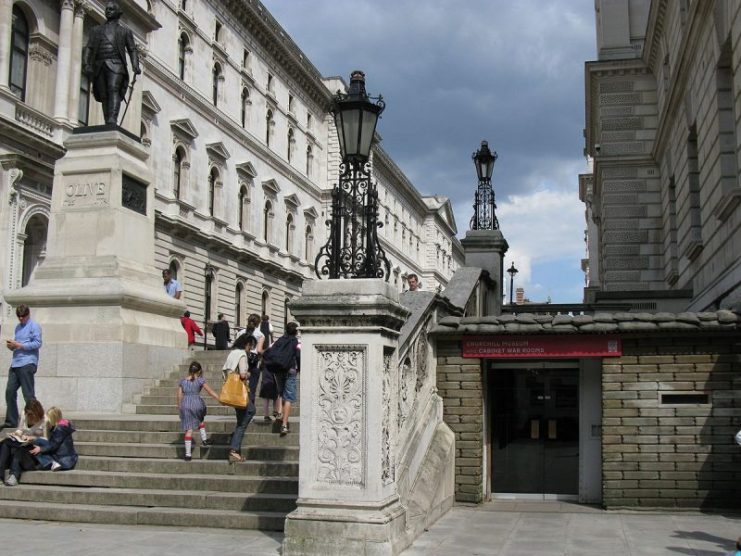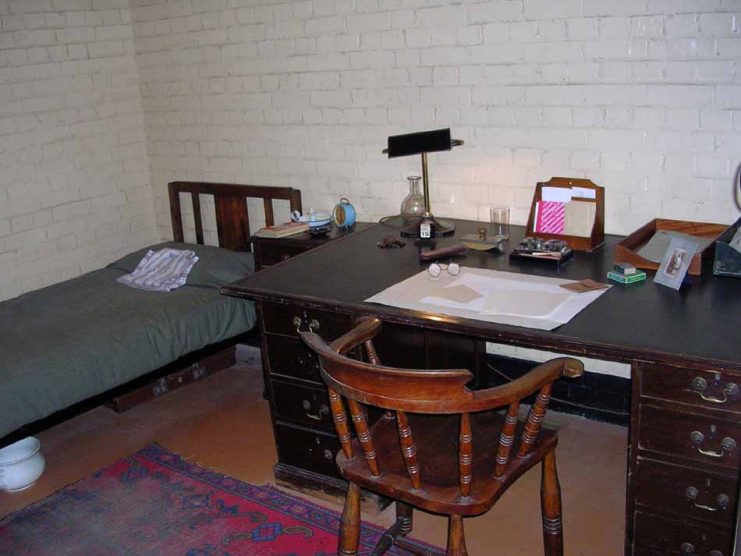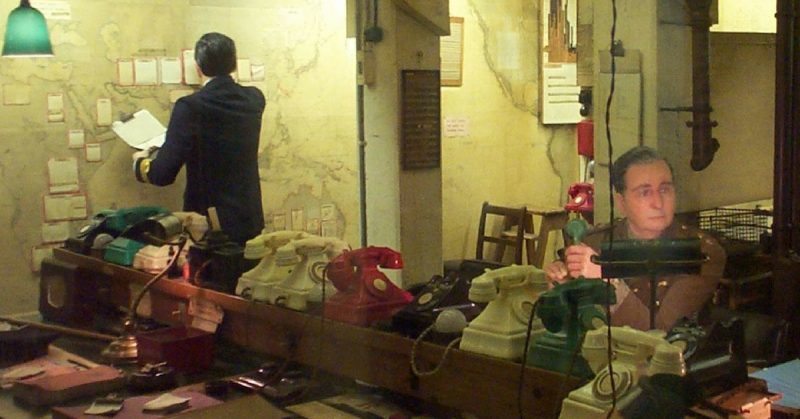At the corner of Horse Guards Road and King Charles Street, London, sandwiched between two large buildings next to Clive Steps, is a set of doors that could easily be missed. Once inside, visitors are taken underground and whisked back to 1939. Sir Winston Churchill’s underground bunker from which he directed WWII, still looks exactly the same as when the last person left it in 1945 at the end of the war.
The Map Room is set up with documents and writing instruments at each seat at the table. The original maps are on the walls and the telephone the Prime Minister used is near his place at the head of the table – on which of course there are ashtrays. The maps, furniture, and books have been there for over seventy years.
The Cabinet Room is similarly equipped with its original tables and maps, and it does not take much to envisage the Prime Minister and his Cabinet working furiously to save Great Britain from the Germans.
Churchill’s underground bunker contained four rooms; the Map Room, the Cabinet Room, a bedroom/study for Churchill and the Transatlantic Telephone Room which had a wall of switchboards manned by operators. There were long hallways between the rooms and extra rooms were continually added as members of the top military brass and advisors joined him, bringing their own clerks, for the duration of the war.

Other than the occasional nap, Churchill did not use the bedroom very much as he disliked sleeping underground and was disturbed by distracting sounds. A sign was erected prohibiting whistling and unnecessary noise, and his typists used silent Remington typewriters imported from the United States.
A part of the Imperial War Museum, the Churchill War Rooms were opened to the public in 1984 by Margaret Thatcher. Although admission to the Imperial War Museum is free, the Churchill War Rooms charge 28 dollars for access.
The collection contains a fifty-foot interactive exhibit entitled “Churchill’s Lifeline” which shows a timeline of history as it happened during Churchill’s life including documents, pictures, and mementos from his childhood.
A letter regarding the employment of a new typist; as well as notes which were written by Churchill’s private secretary, Elizabeth Layton; and a request made by the female workers in the Bunker are also on display. In 1942, when Churchill was scheduled to visit the US, the ladies sent him a memo entitled “Operation Desperate.” In it, they asked for silk stockings (nylon pantyhose had not yet been invented) cosmetics and chocolate – all hard to find in wartime Britain. Along with all government documents the memo was correctly typed. It was however signed by Nausea D. Bagwash, Lizzie Lightfoot, Deadly Nightshade, Maggie Deuce and June Winterbottham (Mrs).

The members of Churchill’s private staff were loyal to him. According to Elizabeth Layton, “We of his personal staff were completely devoted to him, even though he was inclined to be impatient and demanding. He was somebody who drew our loyalty and our deep respect and affection… the negative side was only on the surface. Underneath he was a very caring person”.
The typists, switchboard operators, and secretaries worked up to twelve hours at a time, with no windows or doors to let in natural light. According to Myra Nora Collyer, a clerk in the war room, artificial sunlight lamps were set up once a week to help alleviate the dreary conditions.
Churchill’s War Rooms are featured in the new movie, Darkest Hour, starring Gary Oldman as Churchill and directed by Joe Wright. The film focuses on the early years of his administration and the problems he faced becoming Prime Minister of Great Britain during a war where humanity was at stake.
